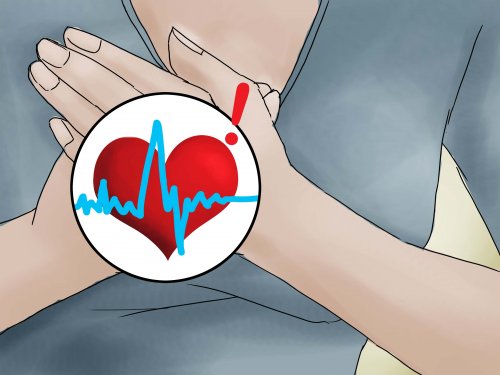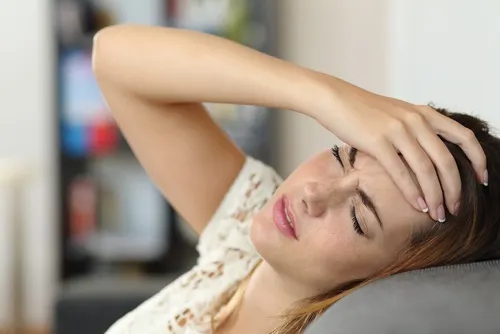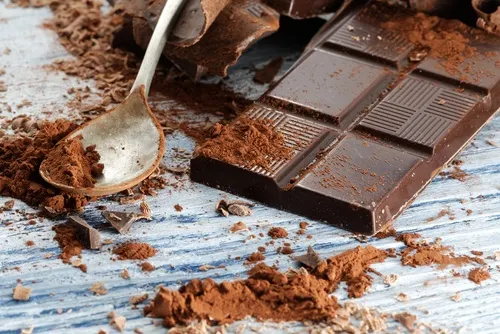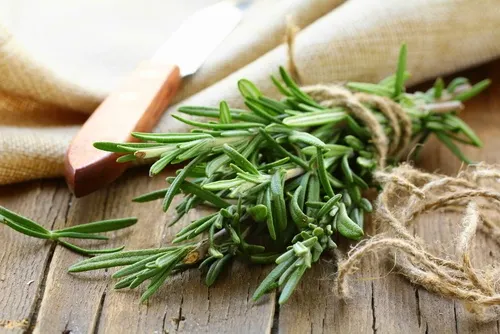10 Foods that Relieve Hypotension

Hypotension is a condition that causes abnormally low blood pressure. According to information from the Mayo Clinic, the most common symptoms are dizziness and lightheadedness.
Episodes can last from a few seconds to a couple of minutes.
Hypotension or its symptoms can be a warning sign of a serious medical condition. It can occur as a result of internal bleeding, a critical illness, or hypoglycemic processes. In these cases, it’s best to seek medical treatment.
In this article, we’ll tell you which foods can help you when you’re suffering from low blood pressure.
What’s hypotension and why does it happen?
Blood pressure is the pressure exerted by the blood on the walls of the vessels. Hypotension is poor or less-than-normal tension (depending on the person’s age or gender).
When blood pressure is low, not enough blood reaches the vital organs.
The main causes are:
- Taking some types of antidepressants, as shown in this study carried out by Dr. Andrés Heerlein.
- Being dehydrated.
- Having diabetes, according to this study by the Cayetana Heredia University in Peru.
- Taking diuretics or heart medicines.
- Suffering from heart failure. According to this study led by the American Cardiology Center, hypotension is one of the main symptoms.
- Eating disorders, as confirmed in this study by the Universidad del Desarrollo in Chile.
- Suddenly changing your body’s position (for example, when getting out of bed).
Did you know? 6 Tips to Prevent a Heart Attack
The most common symptoms of hypotension are:
- Dizziness, blurred vision, vertigo
- Nausea and vomiting
- Pallor
- Chest pain
- Fainting
- Difficulty breathing
- Headaches
- Numbness in legs or hands
- A feeling of instability
- A stiff neck
Foods that raise blood pressure

One effective way to regulate blood pressure and reduce discomfort is to consume certain foods or drinks:
Water
If the reason for hypotension is dehydration or a heat stroke, then the most effective remedy is to drink water. According to this study conducted by the Spanish Society of Basic and Applied Nutrition, good hydration is a key factor in allowing the body to function properly.
Start slowly, taking small sips, and drink more as you feel better. Don’t forget that we must drink 8 – 10 cups of water every day to properly hydrate our body and prevent various symptoms.
Chocolate

It’s believed that chocolate can increase blood pressure, thanks to its high theobromine content. However, we wouldn’t recommend using chocolate as a way to combat hypotension, as recent studies have concluded that there is a lack of evidence to support its supposed benefits. Equally, an investigation carried out by the Spanish Institute of Food Science, Technology and Nutrition (ICTAN) highlights its hypotensive nature, and leaves the door open for future research into the effects of theobromine.
In any case, we’d recommend eating chocolate with more cocoa than fats or milk because they’re healthier.
This article may interest you: 5 Great and Curious Reasons to Eat Dark Chocolate
Electrolyte drinks
These well-known “sports drinks” are recommended for people with low blood pressure since they contain minerals such as sodium, magnesium, and potassium.
If drinking mineral water doesn’t improve your symptoms, try isotonic drinks. However, in this report, the Spanish Heart Foundation recommends caution, and suggests that these drinks should only be used by athletes, or by those who have suffered a severe drop in blood pressure.
Cheese

Due to the fact that cheese contains salt, eating a cube of fresh cheese is an excellent idea when your blood pressure drops.
You can also eat a turkey sandwich, an olive, or a pickle.
The sodium that these foods contain is enough to prevent hypotension. However, you shouldn’t overdo it with your salt intake as it can raise your blood pressure too much and pose a risk to your health, as shown in this study carried out by the Las Condes Clinic in Chile.
Coffee or tea
As with salt, it’s good to consume caffeine or theine in small amounts if your blood pressure is low. A cup of either hot drink is enough.
Likewise, however, it’s important not to drink too much, as it can cause tachycardia. This investigation by the Alcorcón Hospital in Madrid recommends only using it in specific cases of sudden hypotension.
Licorice

Licorice is an interesting option when it comes to preventing new episodes of hypotension. This is because it regulates blood pressure and can be consumed in both teas and desserts.
For example, if it’s very hot in the summer, drink a cup of licorice tea during breakfast to prevent blood pressure drops. However, it’s important be careful. According to this study conducted by the Hospital de Terrassa in Barcelona, it can contribute to the development of hypertension.
Nuts
Due to their vitamin B content, nuts can help balance blood pressure. Furthermore, they prevent not only hypotension but also hypertension. According to this study by the John M. Eisenberg Center for Clinical Decisions and Communications Science in the US, vitamin B is highly recommendable.
You could try carrying a small bag of almonds, raisins, nuts, and hazelnuts with you at all times, and eat them if you start to feel bad.
Other foods that offer this vitamin are legumes and cereals.
Rosemary

Rosemary maintains blood pressure levels, so we recommend that you consume it as a tea when you start experiencing symptoms. This is supported by a study conducted by the Paulista State University in Brazil.
Fruits with vitamin C
It’s believed that although all fruits are good for preventing dehydration or relieving symptoms of hypotension, there is one group that stands out above the rest: citrus fruits.
However, there is no scientific evidence to support the idea that citrus fruits can help to increase blood pressure.
What to do if your blood pressure drops
In addition to consuming any of the foods and drinks mentioned above, you can follow these tips when your blood pressure drops:
- Lie down and elevate your legs or sit down and then put your head between your knees.
- Open the windows and breathe in fresh air.
- Drink a glass of water.
- Eat a snack or something sweet.
- Stop doing what you’re doing to avoid fainting or falling down.
- If your symptoms don’t subside, call 911.
In this article, we’ve given you some tips and advice to help you identify and relieve symptoms of hypotension. However, both hypertension and hypotension are conditions that should be monitored by a specialist.
We hope that you’ve found this article useful!
Main image courtesy of © wikiHow.com
All cited sources were thoroughly reviewed by our team to ensure their quality, reliability, currency, and validity. The bibliography of this article was considered reliable and of academic or scientific accuracy.
- Tritapepe, L., Nencini, C., & Tallarico, D. (2012). Hypotension. In Echocardiography for Intensivists. https://doi.org/10.1007/978-88-470-2583-7_30
- Engler, M. B., Engler, M. M., Browne, A., Chiu, E. Y., Mietus-Snyder, M. L., Paul, S. M., … Blumberg, J. (2004). Flavonoid-Rich Dark Chocolate Improves Endothelial Function and Increases Plasma Epicatechin Concentrations in Healthy Adults. Journal of the American College of Nutrition. https://doi.org/10.1080/07315724.2004.10719361
- Jéquier, E., & Constant, F. (2010). Water as an essential nutrient: The physiological basis of hydration. European Journal of Clinical Nutrition. https://doi.org/10.1038/ejcn.2009.111
- Hypotension
This text is provided for informational purposes only and does not replace consultation with a professional. If in doubt, consult your specialist.








